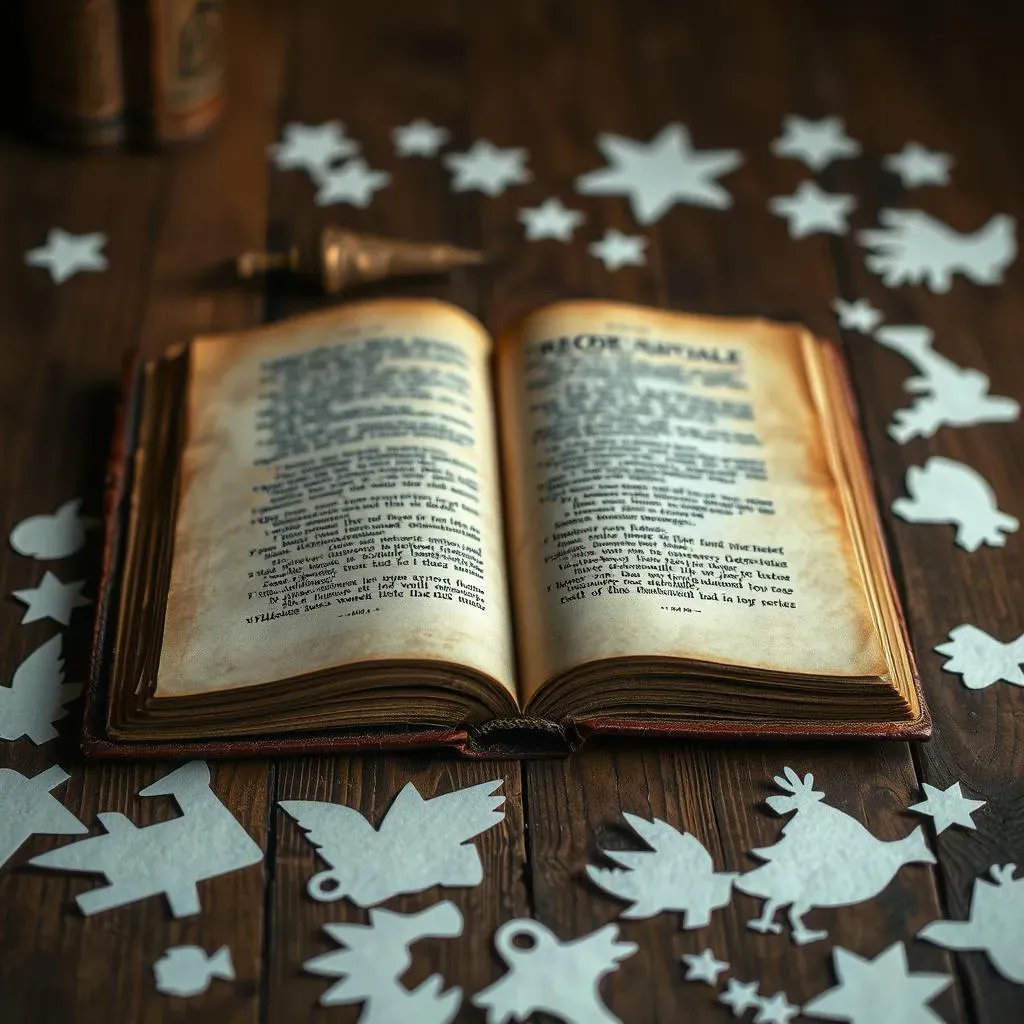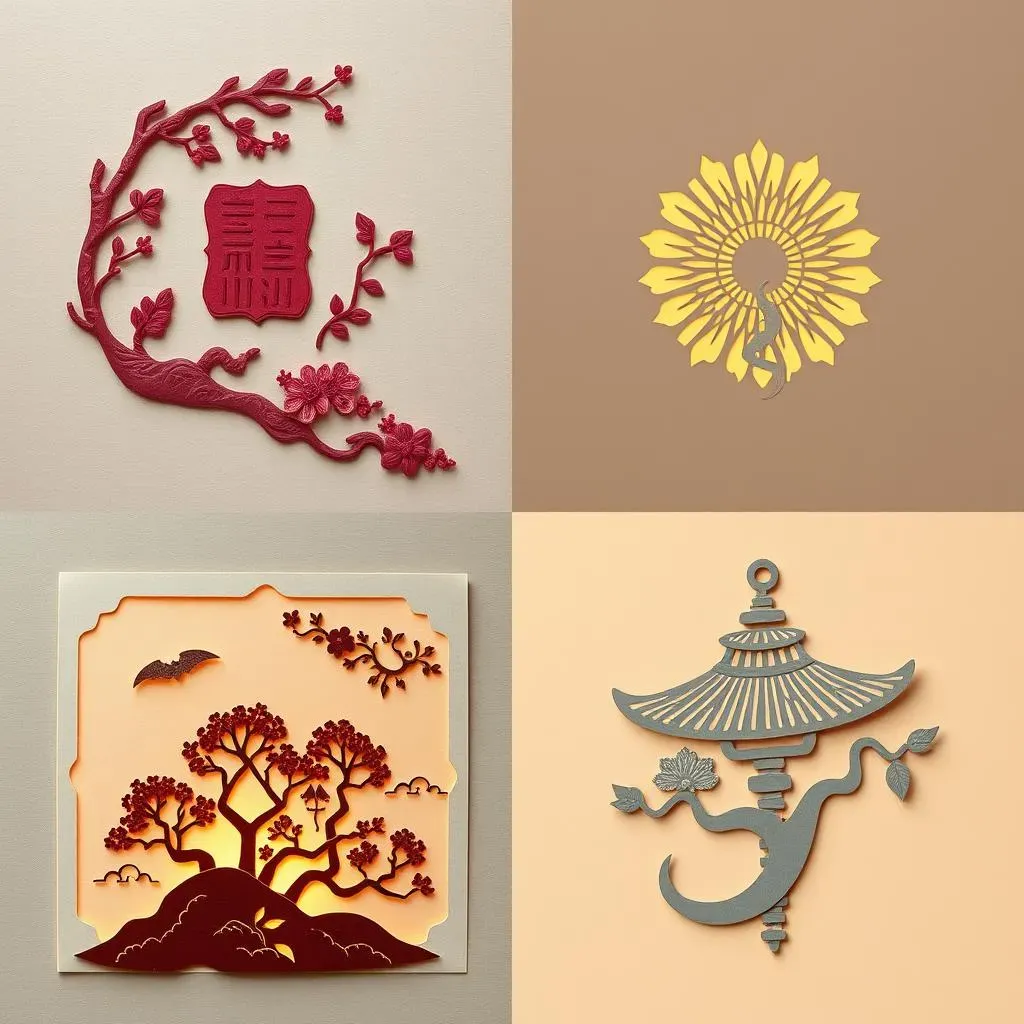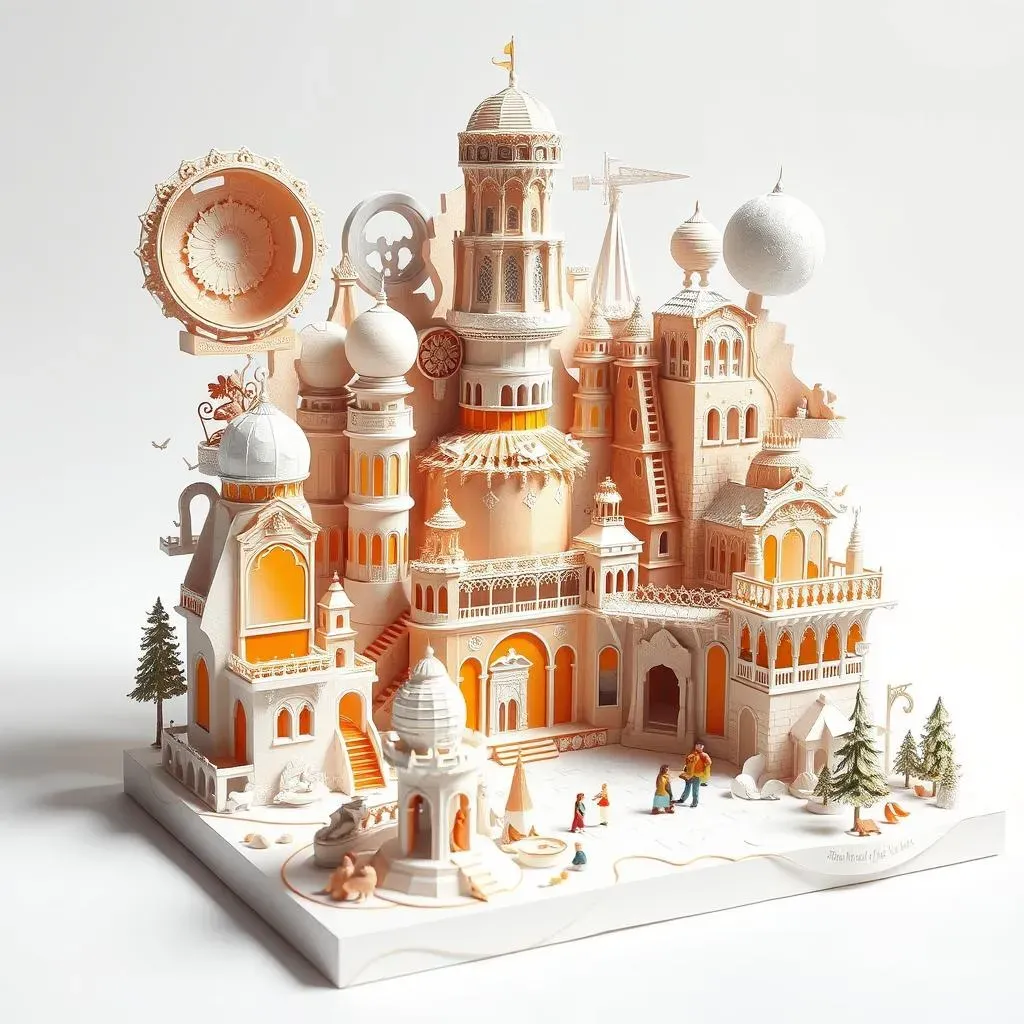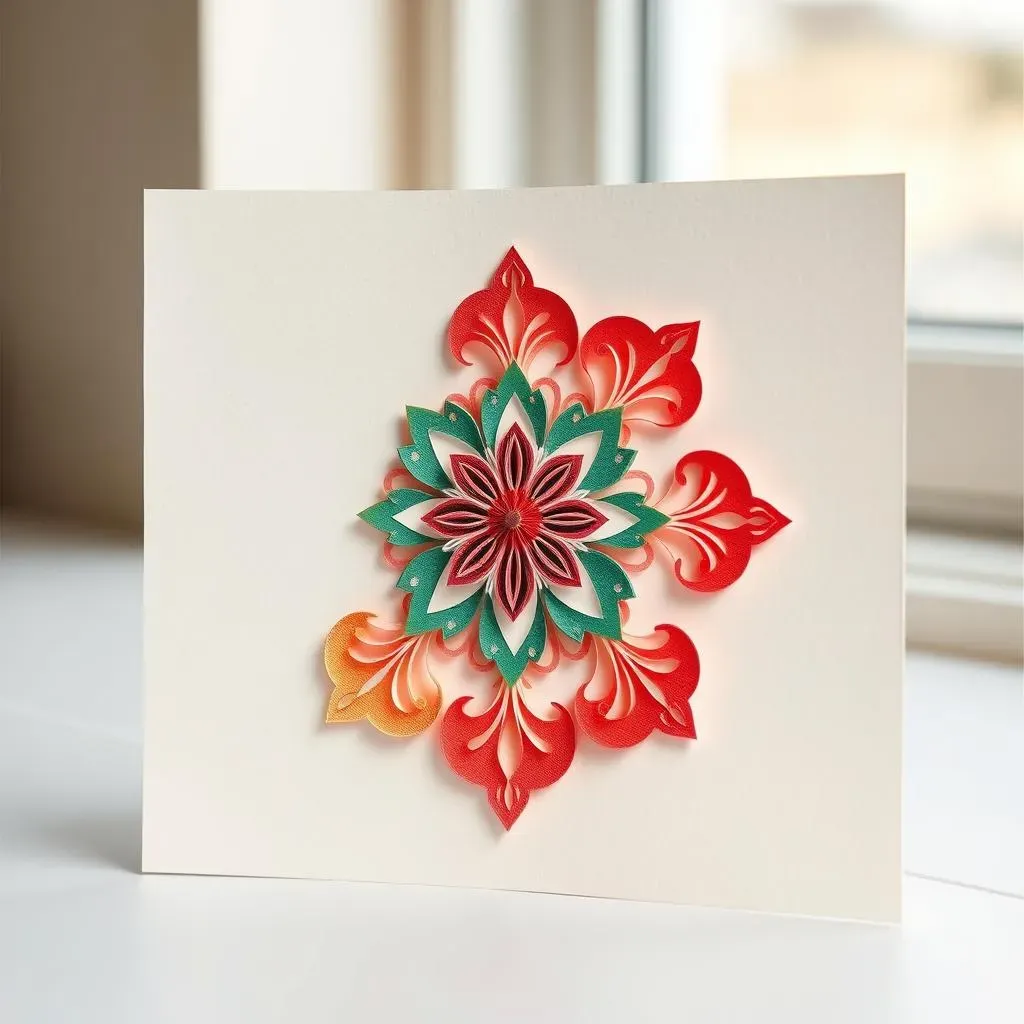Table of Contents
Ever wondered what paper cutting art is all about? It's more than just snipping paper; it's a fascinating art form with a rich history spanning centuries and cultures. This article will guide you through the captivating world of "what is paper cutting art," exploring its origins, diverse styles, and the techniques used to create these intricate designs. We'll journey from ancient Chinese traditions to modern interpretations, examining the tools and skills involved in transforming simple sheets of paper into stunning works of art. Prepare to be amazed by the incredible variety of paper cutting styles found across the globe, from delicate Japanese kirie to bold and dramatic Mexican designs. We'll also delve into the practical aspects, covering the essential tools and techniques needed to start your own paper cutting journey. Whether you're a seasoned artist or a curious beginner, this exploration of paper cutting will inspire your creativity and leave you with a deeper appreciation for this unique and expressive art form. Get ready to discover the magic behind the cuts!
A Brief History of Paper Cutting
A Brief History of Paper Cutting
Ancient Origins
Believe it or not, the art of paper cutting stretches back further than you might think! While pinpointing the exact origins is tricky, evidence suggests paper cutting emerged alongside the invention of paper itself in ancient China. Think about it – once you had a material thin and pliable enough, the urge to cut shapes into it must have been irresistible! Early examples often featured simple shapes and patterns, used for decorative purposes or in ceremonies. Learn more about the earliest forms of paper cutting by checking out this article on when Chinese paper cutting started.
These early paper cuts weren't just pretty decorations; they held symbolic meaning too. Certain shapes and designs represented good luck, prosperity, or protection. It's like a secret code, where each cut held a deeper meaning. This blend of aesthetics and symbolism is something that continues to this day.
Era | Notable Development |
|---|---|
Han Dynasty (206 BC – 220 AD) | Paper invented, laying the groundwork for paper cutting. |
Tang Dynasty (618-907 AD) | Paper cutting becomes more widespread, used in various contexts. |
Spread and Evolution
From its Chinese roots, paper cutting spread like wildfire across the globe, taking root in various cultures. Each region added its own unique twist, resulting in a huge variety of styles. In some places, paper cutting became a folk art tradition, passed down through generations. In others, it evolved into a high art form, created by skilled professional artists. Want to know more about the different styles? Check out our article on types of paper cutting.
As paper cutting traveled, it adapted to local traditions and aesthetics. Think of the intricate detail of Japanese kirie, the bold designs of Mexican papel picado, or the symbolic imagery found in Jewish paper cutting. Each style tells a unique story, reflecting the culture from which it sprang.
- China: Jianzhi, intricate designs often symbolic.
- Japan: Kirie, delicate and precise cuts.
- Mexico: Papel picado, bold, colorful designs for celebrations.
Modern Paper Cutting
Today, paper cutting continues to thrive, embracing new technologies and artistic approaches. Modern artists experiment with different papers, tools, and techniques, pushing the boundaries of what's possible. Some artists create stunning large-scale installations, while others focus on intricate, miniature works. Discover more about modern techniques by reading our guide on mastering paper cutting.
The accessibility of paper cutting also makes it a popular hobby. From simple greeting cards to complex sculptures, paper cutting allows for endless creative exploration. Its versatility means it can be a relaxing pastime or a challenging artistic pursuit. It's a testament to this art form that it has stood the test of time, constantly adapting and evolving, while retaining its unique charm.
Different Styles of Paper Cutting Around the World
Different Styles of Paper Cutting Around the World
The beauty of paper cutting lies in its incredible diversity! It’s not a single style, but a global phenomenon, with each culture adding its unique flair. Think of it like a delicious world cuisine – each dish uses the same basic ingredients (paper and scissors!), but the final result is wildly different depending on the chef (artist!) and their culinary heritage (cultural traditions).
Let's start with the granddaddy of them all: Chinese Jianzhi. These intricate designs, often symbolic, are packed with meaning. Want to unlock their secrets? Check out our post on Chinese paper cutting symbolism. Then there's the delicate precision of Japanese Kirie, where the focus is on clean lines and subtle details. It's a world apart from the vibrant, celebratory Papel Picado of Mexico, which uses bold colors and intricate patterns for festive occasions. These examples only scratch the surface; there's a whole world of styles waiting to be discovered!
- Chinese Jianzhi: Intricate, symbolic designs, often used for celebrations and decorations.
- Japanese Kirie: Delicate, precise cuts, often depicting nature scenes or traditional motifs.
- Mexican Papel Picado: Bold, colorful designs, frequently used for festivals and celebrations.
Beyond these well-known styles, countless other regional variations exist. Think of the intricate geometric patterns found in some Slavic traditions, or the delicate silhouette work popular in parts of Europe. Even within a single country, you’ll find diverse regional styles. For instance, the paper-cutting traditions of different regions within India showcase unique local influences and techniques. Each style reflects the history, beliefs, and artistic sensibilities of its creators. It’s a truly global art form!
Exploring these diverse styles is like embarking on a fascinating global adventure. Each cut tells a story, revealing the cultural richness and artistic creativity of people across the world. Ready to learn more about specific techniques? Our guide on how to do Chinese paper cutting is a great place to start!
Region | Style Characteristics | Common Motifs |
|---|---|---|
China | Intricate, symbolic | Animals, flowers, auspicious symbols |
Japan | Delicate, precise | Nature scenes, landscapes, traditional patterns |
Mexico | Bold, colorful | Skulls, flowers, religious icons |
Tools and Techniques for Paper Cutting
Tools and Techniques for Paper Cutting
Essential Tools
So, you're ready to dive into the world of paper cutting? Awesome! But before you start snipping, let's talk tools. The most basic tool you'll need is a good pair of sharp scissors. Believe me, dull scissors are your worst enemy! They'll make clean cuts nearly impossible, leading to frustration and potentially ruined projects. Look for scissors with comfortable handles and blades that can make precise cuts, even in intricate designs. For really detailed work, you might consider adding a craft knife or X-ACTO knife to your arsenal; these provide more control for fine details. Check out our post on how cutting paper affects scissors for more tips.
Beyond scissors and knives, a self-healing cutting mat is a must-have. This protects your work surface from those accidental slices, and it's super helpful when working with a craft knife. A good ruler is also crucial for accurate measurements and straight lines. Finally, don't underestimate the power of good lighting! A well-lit workspace will make a huge difference in your ability to see those tiny details and make precise cuts. Want to learn more about creating amazing designs? Our article on making paper cutting designs has some great ideas.
- Sharp scissors (various sizes)
- Craft knife/X-ACTO knife
- Self-healing cutting mat
- Ruler
- Good lighting
Cutting Techniques
Now for the fun part: the actual cutting! Start with simple shapes and gradually work your way up to more complex designs. Don't be afraid to experiment with different techniques. For example, try varying the pressure you apply to the scissors or knife to create different line weights and textures. This can add depth and visual interest to your work. Looking for some beginner-friendly tutorials? Our guide on beginner paper cutting tutorials is a great starting point.
Remember, practice makes perfect! The more you work with your tools and experiment with different techniques, the more confident and skilled you'll become. Don't be discouraged if your early attempts aren't perfect – that's all part of the learning process. Focus on enjoying the process, and you'll be surprised at how quickly your skills improve. Want to try something a bit different? Check out our tips on letter cutting in paper for a fun challenge.
Technique | Description |
|---|---|
Basic Cutting | Straight cuts using scissors or a knife. |
Intricate Cutting | Detailed cuts using a craft knife for fine details. |
Layered Cutting | Cutting multiple layers of paper for depth and dimension. |
Modern Paper Cutting and its Applications
Modern Paper Cutting and its Applications
Beyond the Traditional
Modern paper cutting has exploded beyond its traditional roots! It's no longer just about delicate designs; artists are using it to create everything from stunning large-scale installations to intricate, miniature sculptures. Think of laser-cut designs adding a whole new level of precision and complexity. Or consider the use of different paper types – from delicate rice paper to thick cardstock – to create varied textures and effects. Want to explore more advanced techniques? Take a look at our article on mastering intricate designs.
Artists are also experimenting with combining paper cutting with other art forms, such as painting, collage, and mixed media. This opens up a world of creative possibilities, allowing artists to push the boundaries of the medium and create truly unique works. For example, you might see paper cutting incorporated into clothing design, jewelry making, or even architectural models. This versatility is a testament to the enduring appeal of paper cutting as an artistic medium. Interested in making something unique? Try our guide on creating unique designs.
- Large-scale installations
- Miniature sculptures
- Combined with other art forms
- Used in various applications (clothing, jewelry, etc.)
Commercial Applications
It's not just about fine art either; paper cutting finds its way into many commercial applications. Think greeting cards, packaging, advertising, and even window displays. Its versatility makes it ideal for adding a unique, handmade touch to mass-produced items. It's a way to add a touch of elegance and artistry to everyday objects. And speaking of unique applications, you might find our article on paper cutting slang interesting!
The rise of digital design tools has also opened up new avenues for paper cutting. Artists can now create intricate designs using software and then use laser cutters or CNC machines for precise cutting. This allows for mass production of intricate designs while maintaining a handmade aesthetic. It's a fascinating blend of traditional craft and modern technology. If you're interested in learning more about designing for paper cutting, check out our article on designing for paper cutting.
Application | Examples |
|---|---|
Greeting Cards | Personalized cards, unique designs |
Packaging | Adding artistic flair to product packaging |
Advertising | Creating eye-catching advertisements |
